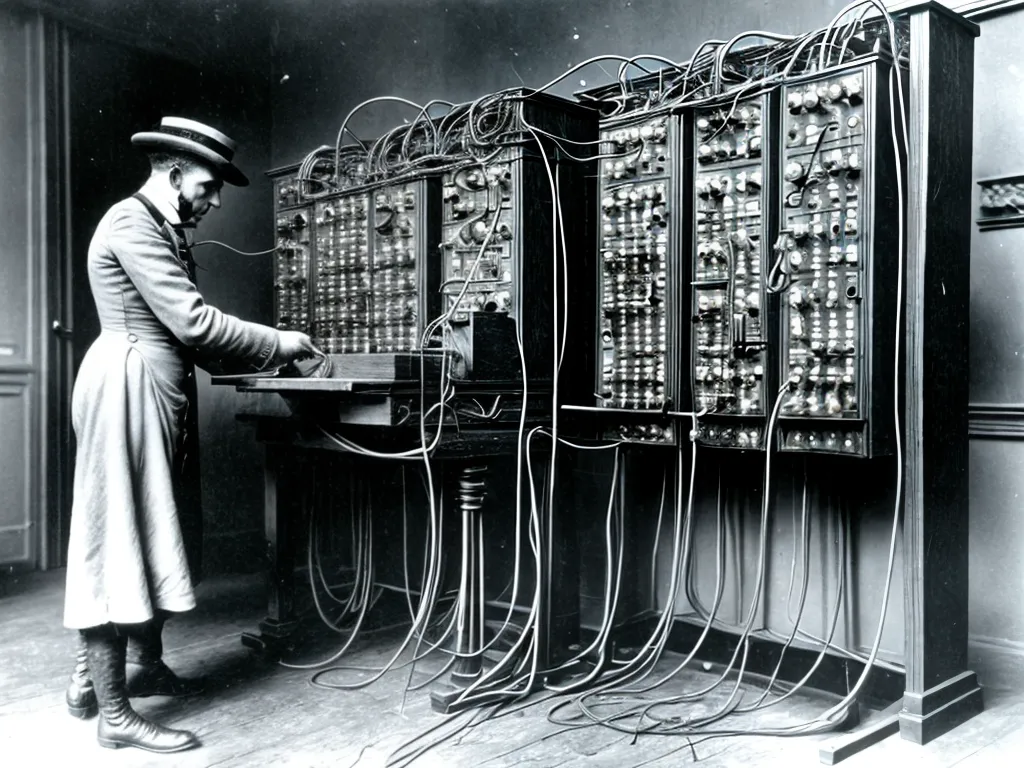
The 19th century saw immense growth in long-distance communications, primarily driven by the development and spread of the electric telegraph. The telegraph allowed for nearly instantaneous communication over long distances for the first time in human history. While early telegraph systems used crude and inefficient means of transmitting signals, the development of the open-wire telegraph system in the mid-19th century marked a major turning point that helped revolutionize telecommunications.
The Rise of the Electric Telegraph
The origins of the electric telegraph date back to the early 19th century experiments of Hans Christian Ørsted and others with electricity and magnetism. Ørsted discovered that an electric current could deflect a magnetic compass needle, providing the basis for how a telegraph works.
Samuel Morse is credited with building the first working electric telegraph in the United States in 1844, which sent signals over a wire laid between Washington, D.C. and Baltimore. Morse code, which encodes letters into a series of dots and dashes, was developed by Morse to transmit messages quickly and efficiently.
The telegraph offered nearly instant long distance communication for the first time in history. Early telegraph systems used a single wire to carry the electrical signal with ground returns providing the circuit's return path. However, these single-wire, ground return systems were vulnerable to unreliable transmission and interference.
The Open-Wire System
The major innovation that helped the telegraph truly revolutionize 19th century communication was the development of the open-wire telegraph system. In 1852, Dr. Werner Siemens in Germany pioneered the use of a second 'return' wire to create a complete electrical circuit for the telegraph.
Rather than relying on ground returns, the open-wire system used two wires suspended on poles to carry the telegraph signal and return. This provided a much more reliable and efficient means of signal transmission that was less susceptible to interference. The open-wire system became the basis for most telegraph lines built thereafter.
Advantages of Open-Wire Telegraph Lines
The open-wire system transformed the telegraph in several key ways:
-
Reliability - The two-wire circuit was far less susceptible to interference compared to single-wire ground return systems. This allowed for clear and reliable long distance communication.
-
Speed - Open-wire lines had lower electrical resistance, allowing signals to propagate faster over long distances. Communication speeds dramatically improved.
-
Efficiency - Two-wire circuits required less battery power compared to ground returns, lowering operating costs.
-
Carrying Capacity - Open-wire lines could carry more signals, allowing multiple messages to be sent simultaneously on the same line.
"The open-wire system allowed telegraph lines to transmit messages across vast distances reliably, cheaply, and efficiently."
Impact on 19th Century Communications
The open-wire telegraph system sparked a communications and technology revolution in the 19th century. By dramatically improving the telegraph's capabilities, it helped connect people and locations like never before.
-
Telegraphic communication connected families, businesses, markets, governments, and military across continents.
-
Major world events could be reported instantly worldwide. News no longer had to travel slowly.
-
Telegraph lines were built widely along railroad right-of-ways, enabling better coordination of trains.
-
Financial markets, commodities prices, and commercial enterprise functioned better with instant long-distance communication.
-
The telegraph ushered in the era of international communications and globalization.
The Telegraph's Legacy
While the telegraph was eventually superseded by the telephone, radio, and digital communications, it changed the 19th century world dramatically. The telegraph's success was made possible by the open-wire system, which overcame the limitations of early telegraph circuits. By providing reliable, efficient long-distance communication, the open-wire telegraph truly revolutionized human connections and society. Its impact is still felt today in our interconnected world.